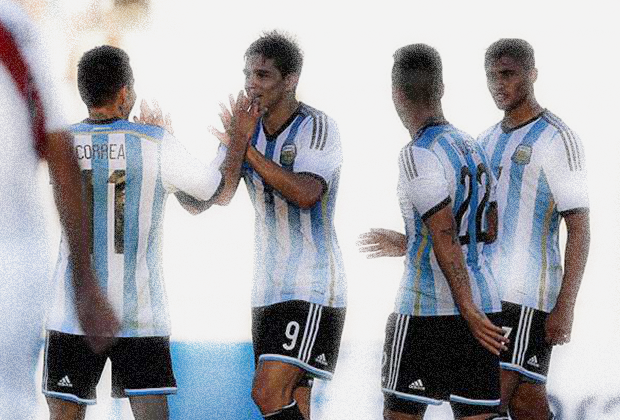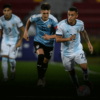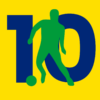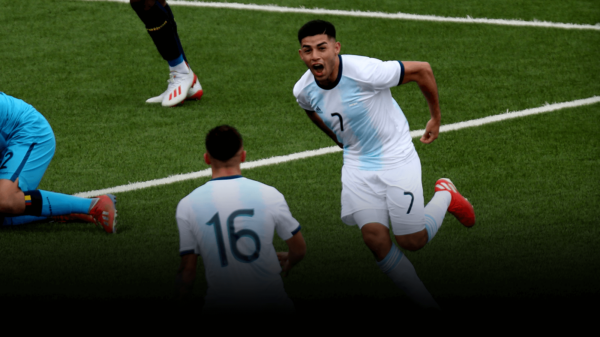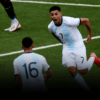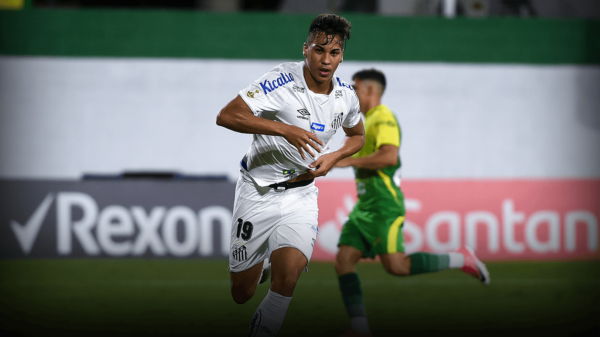The 2015 South American Youth Football Championship was hosted in Uruguay and it was Argentina who stood as winners, with Colombia as runners-up.
Having suffered an ignominious early exit on home soil two years ago, Argentina returned to form to capture their first Sudamericano U20 title in 12 years. The Albiceleste cruised through a relatively kind first group stage before topping the Hexagonal with thirteen points to ensure a spot at the U20 World Cup as well as a place at the 2016 Rio Olympics. Joining them in New Zealand this June will be Colombia, Uruguay and Brazil who made up the top four of the Hexagonal at the expense of Peru and Paraguay.
It was clear from the outset that Angel Correa would play a leading role in any success for Argentina. And so it proved. It didn’t take long for the Atletico Madrid new boy, returning from seven months on the side-lines after surgery on a heart condition discovered in his medical, to blow away the cobwebs as, mere minutes into Argentina’s first game against Ecuador, Correa waltzed past two defenders on the byline to deliver a dangerous ball across the face of goal. Ecuador didn’t heed the warning and Correa laid on two assists, scoring one himself, in an eye-catching 5-2 rout on the opening day.
Throughout the tournament Correa underlined his star quality with his scampering dribbling skills, incredible vision, sublime technique and ability to thread an eye-of-a-needle pass. Gio Simeone may have walked away with the golden boot but Cholito owed a great deal to the creativity and space created by the unsettling presence of Correa. A flurry of perpetual movement, Correa laid on three assists – an exquisite assist for Maxi Rolon against Brazil the pick of the bunch – and scored four himself, including the winner against Uruguay in the final game; a fitting flourish to sign off on a tournament he lit up from start to finish.
Seven wins, one draw and a loss may sound pretty convincing but there were still doubts of the free-scoring Argentina after the first group stage. Many felt that they hadn’t been seriously tested and their defeat to Paraguay raised questions of how they would fare against more organised opposition. Nevertheless, those fears were put to bed with an improved defensive solidity and tactical flexibility that ensured they returned from across the Rio de la Plata with their hands on the silverware.
Correa aside, there were a number of standouts for Argentina. Goalkeeper Augusto Batalla had a fine tournament, making a string of important saves and is apparently on the radar of Real Madrid, while River teammate Emanuel Mammana continued to show he is regarded as such an elegant, technical defender with a big future. Both were real leaders at the back and were a big part of Argentina’s improved defensive performance as the competition progressed.
Up front, Simeone showed good movement and a poacher’s instinct to equal Luciano Galletti’s record nine goal haul. His familial ties will garner much attention but the jury is still out as the majority of Gio’s goals came against weaker opposition and he will need to follow up his exploits at club level this year if he is to truly prove himself.
Another member of the strong Millonario contingent, playmaker Tommy Martinez helped share the creative burden, as did new Villarreal signing Leo Suarez, while Huracan’s Cristian Espinoza was a constant danger on the right flank and added width to the side. Finally, Velez’s Leo Rolon was one of the more unsung members of the team who had a strong tournament, his versatility seeing him feature at right wing back, full back and in the centre of midfield.
Defeated by Argentina in the final game, hosts Uruguay were unlucky to finish in third place and miss out on a chance to play at the Olympics. Perhaps the most well-balanced team in the competition, Fabian Coito’s young charges were not always the most expansive but in true Uruguayan style played to their strengths, pressing, harrying and maintaining their disciplined shape in order to allow their talented attacking players to make the difference in the final third.
Boasting a defence that was breached just five times in nine games, the settled Charrua back four was well marshalled by bobble-haired Mauricio Lemos and commanding goalkeeper Gaston Guruceaga, who made a number of timely inventions, kept five clean sheets and looks as if he has all the makings of a future senior international. Shielding the defence was the brilliant double pivot of Nahitan Nandez and Mauro Arambarri who set the tempo with their endless energy in the middle of the park and epitomised the warrior spirit of the side. Capitan Nandez read the game well and snapped into tackles while Arambarri was more box-to-box, chipping in with important goals with his trademark late surges.
Uruguay possessed its fair share of attacking talent too. Tall, graceful playmaker Gaston Pereiro enjoyed a stellar campaign and notched an impressive five goals. In a month which saw the retirement of Juan Roman Riquelme, Pereiro could go way to filling the void for those who enjoy their classy number 10s. Also on the books of Nacional, 17-year-old Rodrigo Amaral truly announced himself as one of the revelations of the tournament. Starting the tournament as a substitute, he forced his way into the first eleven at the expense of the disappointing Jaime Baez and was an absolute livewire. Skilful, powerful, tenacious and an eye for goal, Amaral has it all and has huge potential. Up front, the mobile Franco Acosta continued his good form from the U17s and hit the back of the net four times, while Facundo Castro pace on the right and set piece deliveries were deadly.
Colombia, who pipped Uruguay to second, were also a team whose foundations were built on an equally strong defence and a focus on the collective. In what was a strong tournament for goalkeepers, the physically imposing Alvaro Montero displayed lightning quick reflexes and, like Guruceaga, kept five clean sheets. Juan Sebastian Quintero was probably the standout defender of the Sudamericano and formed a good partnership with Davinson Sanchez, while full backs Angulo and Orejuela could develop into decent players.
Despite good strength in depth, at times it felt that Colombia were just missing a final piece of the jigsaw to give them an added dimension in the final third. First choice central midfield pair Brayan Rovira and Andres Tello are well-rounded players who circulate the ball well and pass well in order to provide a platform for those of a more attacking ilk. By far the most consistent outlet was Jeison Lucumi who always provided a goal scoring threat cutting in off either flank and, to a slightly lesser extent, Rafael Santos Borre who always made Colombia look more dangerous with his creativity in movement. Jarlan Barrera and Deinner Quinones were both capable of the spectacular but were somewhat inconsistent, while Jhoao Rodriguez, Mauro Manotas and Alfredo Morelos showed promising signs but couldn’t be relied upon for goals.
Perhaps the answer could have been in the incorporation of the underused Alexis Zapata or to persuade Real Madrid to allow Juan Jose Narvaez to play at the U20 World Cup. Certainly there is enough talent there, now it’s just a case of unlocking its full potential. If Carlos Restrepo can do that, then the Cafateros could be a dangerous outfit in the summer.
Though Brazil successfully qualified for the U20 World Cup, there will be a feeling of disappointment at how the tournament panned out. Alexandre Gallo’s team seemed to follow the pattern of physically impressive, counter attacking sides in the mould of Felipe Luiz Scolari or Dunga, over reliant on a moment of magic from an individual. However, with Gabriel Barbosa criminally overlooked or played out of position, those moments were few and far between and particularly in the big games the Canarinha carried little threat. The players to emerge with any credit were Marcos Guilherme, who had an uncanny knack of finding space at the right time, young midfielder Gerson and goalkeeper Marcos. Elsewhere, the direct Hulk-like Kenedy showed promise, as did centre forward Thalles, midfielder Nathan and centreback Marlon, but all in all it seemed endemic of the general issues surrounding the style and identity of Brazilian football currently.
Paraguay and Peru made little impact on the final stages of the tournament. A case of just rewards after the two played out a drab and entirely predictable 1-1 draw in the first round to ensure they both got the point they needed to go through at the expense of Ecuador. For Paraguay, defender Ivan Canete impressed along with midfielder Gustavo Viera, while there were only brief flashes of striking prodigy Sergio Diaz and Tonny Sanabria flattered to deceive. Peru finished on a brighter note with a 3-1 win over the aforementioned Albirojita and the likes of Sergio Pena, Alexander Succar, Luiz da Silva and Alexis Cossio can take heart from some good performances.
Failing to progress from the group stage, it was a disappointing tournament for both Chile and Ecuador. A wonderful free kick from Cristian Cuevas, a veteran from the last edition, was about as good as it got for Chile as they only managed one win from an admittedly difficult group. Ecuador were made to pay for a terrible first two games and by the time they had found some form it was too little, too late. Goal scoring midfielder Jose Cevallos Jnr showed the class which had persuaded Juventus to previously take him on loan and the direct, pacey Kevin Mercado was a constant menace down the left wing, while Miguel Paralles, Robert Burbano and the fantastically named Ronaldo Johnson all showed signs of promise. Elsewhere, Bolivia continued their woeful record with zero points and Venezuela were goal shy despite some good attacking options and could only beat a second string Uruguay thanks to the referee bizarrely ruling out a perfectly legitimate last minute Uruguay equaliser.
South America will have a strong selection of sides representing it at the Under 20 World Cup and all four should be confident of progressing deep into the tournament, while also giving an opportunity to see some of the finest young talents in football test themselves on the world stage. Roll on New Zealand!
Written by Tom Robinson
You can find more at @tomrobbo89
- 2020 Argentinian Primera: Young Players To Watch - November 26, 2020
- Scout Report: Agustin Urzi | Banfield And Argentina Winger - October 13, 2020
- 2020 Brasileirao’s 10 Young Players To Watch - September 10, 2020




















































